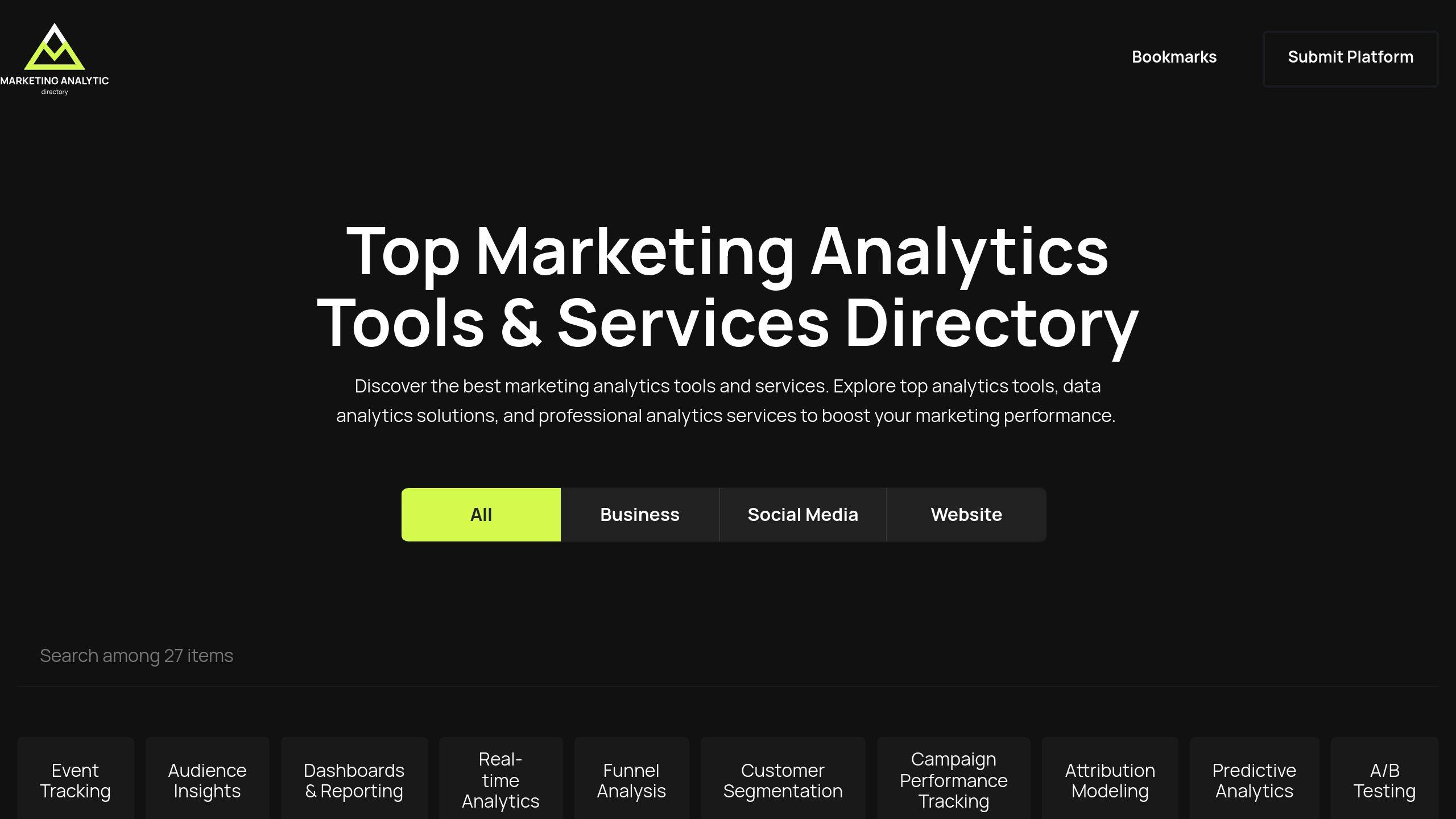Did you know 87% of customers use more than one device to interact with brands? This makes understanding and connecting customer data across channels essential for creating smooth, personalized experiences. Here's what you'll learn in this guide:
- What is Cross-Channel Data? How it maps customer journeys across devices and platforms.
- Key Challenges: Issues like data silos, inconsistent messaging, and limited visibility.
- How to Fix It: Strategies to synchronize data, build unified customer profiles, and improve journeys.
- Tools You Need: Platforms like Adobe Customer Journey Analytics and Twilio Segment to streamline data integration.
Related video from YouTube
What Are Cross-Channel Customer Journeys?
Cross-channel customer journeys map out how customers interact with a brand across both online and offline channels. By analyzing these interactions, businesses can deliver more connected and tailored experiences.
Think of it as a trail of interactions a customer leaves behind. For instance, someone might first see a product on social media, then look it up on their phone, compare prices on a desktop, and finally make the purchase in a store.
Key Elements of Cross-Channel Journeys
Creating effective cross-channel journeys hinges on three main components:
| Element | Description |
|---|---|
| Touchpoints | Points where customers engage with your brand, essential for journey mapping. |
| Customer Personas | Detailed profiles that represent your target audience. |
| Data Integration | Unified data from all sources to provide a complete view of the customer. |
Focusing on these elements helps businesses deliver a more unified experience.
Challenges in Managing Cross-Channel Journeys
Managing these journeys isn’t always straightforward. Here are the main obstacles:
- Data Silos: When departments store customer data separately, it fragments the customer experience, making personalization harder.
- Inconsistent Messaging: Without coordination, customers might get conflicting messages across channels, leading to confusion and a loss of trust.
- Limited Visibility: Tracking customer behavior across all touchpoints - especially between online and offline interactions - can be tough, making it harder to improve the journey.
To address these issues, businesses need tools and strategies that unify data and provide clear insights. Customer journey analytics tools, for example, can help bring all this data together for a clearer picture.
Next, we’ll dive into how to tackle these challenges with effective data integration strategies.
Collecting and Synchronizing Cross-Channel Data
To understand your customer journey fully, you need to gather and connect data from multiple touchpoints. Here's how to organize and synchronize this data for a clear, unified view of your customers.
Main Data Sources for Cross-Channel Integration
Every channel offers unique insights into customer behavior. Below are the key sources worth integrating:
| Data Source | Type of Data | Key Insights |
|---|---|---|
| Website Analytics | User behavior, traffic patterns | Tracks how users interact with your site and their digital journey |
| CRM Systems | Customer profiles, purchase history | Stores customer details and interaction records |
| Social Media | Engagement metrics, sentiment | Shows brand perception and customer feedback |
| Email Platforms | Open rates, click-through rates | Highlights communication preferences and responses |
| In-Store Systems | POS data, foot traffic | Captures offline shopping habits and in-store interactions |
How to Synchronize Data Across Channels
Bringing all this data together into a single, cohesive view requires careful execution. Here are some strategies to get it right:
- Use Common Identifiers: Assign unique identifiers, like customer IDs or email addresses, to link data from different platforms and unify profiles.
- Focus on Data Accuracy: Regularly validate, clean, and format your data to ensure consistency and reliability across systems.
- Unified Profiles: Consolidate all customer data into a single profile for a complete view of their journey, enabling more informed decisions and personalized interactions.
"Providing a seamless and personalized customer experience across all channels is crucial for business success." - Dialzara, Cross-Channel Customer Journey Mapping: 7 Best Practices [1]
- Technical Integration: Use robust tools and processes to merge data records, implement strong data governance, and audit synchronization efforts. This ensures smooth integration and prevents errors.
Don't forget to comply with data privacy laws like GDPR and CCPA. Always obtain consent and safeguard sensitive information. Tools such as Adobe Customer Journey Analytics can help automate synchronization processes while keeping your data consistent and actionable [2].
Once your data is seamlessly integrated, you can focus on using these insights to refine and enhance your customer journey strategies.
sbb-itb-5174ba0
Using Data to Map and Improve Customer Journeys
Steps to Map the Customer Journey
Understanding how customers interact across different channels requires a structured approach. Here's a breakdown of how to create detailed journey maps using cross-channel data:
| Journey Mapping Stage | Key Activities | Data Sources |
|---|---|---|
| Touchpoint Mapping | Identify and categorize all customer interaction points across channels to highlight key moments | Website analytics, CRM, Social media, Email platforms |
| Persona Integration | Use customer personas to align journey mapping with audience behaviors | Surveys, Analytics tools, CRM data |
| Journey Documentation | Map interactions across multiple channels | Cross-channel analytics, Customer feedback |
| Gap Analysis | Pinpoint areas for improvement using data insights | Performance metrics, Customer service data |
For precise journey maps, integrate data from your sales CRM systems directly into each stage. This helps track how different personas move through your sales funnel, offering a clearer picture of their journey [3].
Once your map is ready, use these insights to refine and elevate customer experiences.
Improving Customer Experiences with Data Insights
Cross-channel data is invaluable for spotting weak points and improving interactions at every stage of the customer journey.
"Providing a seamless and personalized customer experience across all channels is crucial for business success." - Dialzara, Cross-Channel Customer Journey Mapping: 7 Best Practices [1]
To make meaningful improvements:
- Pinpoint Pain Points: Analyze transitions between channels to uncover friction and behavioral patterns.
- Smooth Channel Transitions: Synchronize experiences between commonly used channels like mobile and desktop for a consistent flow.
- Boost Engagement:
- Personalize communication based on past interactions.
- Time messages to align with customer behavior.
- Maintain consistency across all touchpoints.
Platforms like Adobe Customer Journey Analytics help transform cross-channel data into actionable insights [2], giving you a unified view of customer interactions to guide better decisions.
Tools and Resources for Cross-Channel Data and Analytics
Once you understand customer journey mapping, the next step is finding tools that make cross-channel data synchronization easier and provide insights you can act on.
Marketing Analytics Tools Directory

The Marketing Analytics Tools Directory is a useful resource for discovering tools designed to sync data across channels. It helps businesses find solutions that connect customer interactions from various touchpoints. With its clear categories, it’s simple to compare tools based on your specific cross-channel mapping needs.
Tools for Cross-Channel Analytics
Today's analytics tools make it easier to bring together and analyze data from multiple channels. Here’s a quick look at some key categories:
| Tool Category | Primary Function | Key Advantages |
|---|---|---|
| Customer Data Platforms | Unified customer profiles | Centralized management and real-time data consolidation |
| Journey Analytics Solutions | Tracking customer interactions | Visualizing and analyzing the entire customer journey |
| Visualization Platforms | Presenting insights | Spotting patterns and trends with clarity |
Examples of Leading Platforms
- Twilio Segment: Brings together customer data from various touchpoints to ensure a consistent experience.
- Adobe Customer Journey Analytics: Focuses on visualizing interactions across channels and pinpointing areas for improvement.
How to Implement Cross-Channel Analytics
To make the most of these tools, follow these steps:
- Use platforms with pre-built connectors for email, social media, and CRM systems.
- Standardize data identifiers to ensure smooth integration.
- Automate data quality checks to maintain accuracy.
- Choose tools that complement each other and address your journey mapping goals.
These tools help tackle issues like data silos and disconnected touchpoints, giving you a complete view of the customer journey. By picking the right mix of solutions, you can turn your cross-channel data into a valuable resource for creating seamless customer experiences.
Conclusion: Achieving Consistent Cross-Channel Journeys
Creating consistent cross-channel experiences starts with effective strategies for syncing data and understanding customer behavior.
The key lies in aligning data across all channels and maintaining a unified view of your customers. For instance, a major retailer used Adobe Customer Journey Analytics to bring together data from their website, mobile app, and physical stores. This approach led to improved customer satisfaction by providing a more cohesive experience.
Here are three main areas to focus on when implementing cross-channel strategies:
| Focus Area | Key Action | Expected Outcome |
|---|---|---|
| Data Integration | Combine all data sources | Gain a complete customer view |
| Journey Mapping | Develop journey maps | Understand customer touchpoints |
| Technology Stack | Use advanced analytics tools | Deliver improved experiences |
Success depends on making your data actionable. By analyzing and refining your approach, you can ensure every interaction feels connected and natural. Unified data allows businesses to create smoother customer experiences across all channels.
As customer expectations grow, companies that prioritize cross-channel data alignment will stand out by delivering the seamless interactions people now demand.


